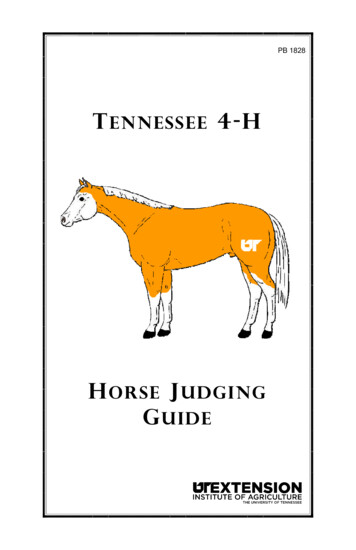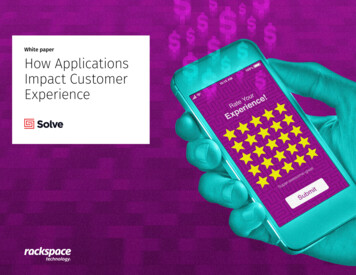
Transcription
White paperHow ApplicationsImpact CustomerExperience
In a crowded marketplace, creating an exceptional customer experience (CX)does more than allow your product or service to stand out. It also drivesbottom-line outcomes. An experience-led focus leads to 1.6x higher brandawareness, 1.5x more employee satisfaction and almost doubles customerretention, repeat purchase rates, average order values and customerlifetime value.1Achieving next-level customer experience is often hampered by technologychallenges, like selecting and implementing applications. To benchmark theimpact of applications on customer experience strategies, we conducted aglobal survey to investigate the role applications play in differentiating thecustomer experience. The survey analyzed 1400 responses from companieswith 300M annual earnings and above. Respondents included roles in IT andnon-IT business units, like marketing, sales, operations and other line-ofbusiness (LOB) leaders who make application decisions in the organization.Table of contentsCustomer experience strategy . . . . . . . . . . . . . . 2Customer experience perceptions. . . . . . . . . . . 4Barriers to application technology adoption. . 6Takeaways for your applications andcustomer experience strategy . . . . . . . . . . . . . . 8How Rackspace Technology helps . . . . . . . . . . . 9With 97% of respondents identifying as at least occasional end users, theresults provide the perspective of both decision makers and applicationusers. The results overwhelmingly confirm that application driven customerexperience is a main strategic priority (48%) ahead of IT security, compliance(45%) and IT strategy (41%). [Figure 1]Strategic priorities [Figure 1]Which of the following are your main strategic priorities?48%CX (Customer experience)45%IT security and compliance41%IT strategy31%Digital transformation30%IT operations28%Cost savings/cost optimization27%Process automation25%AI/ML adoption/implementation24%IT staffingHow Applications Impact Customer Experience1
Customer experience strategySurveyed organizations understand the importance of customer experiencewith 94% reporting some form of initiatives underway in their organization.A small percentage (6%) are seemingly oblivious to the value that customerexperience can bring to their organization and have no strategies or initiativesin place. [Figure 2]Customer experience maturity [Figure 2]55%Strategic corporate program: CX is a strategic program at myorganization, fully integrated across the business.39%Compartmentalized: CX initiatives exist at my organization,but they are siloed and exist in only certain business areas.6%Non-existent: My organization has no CX initiatives orstrategy in place.Opinions on whether to focus customer experience efforts internally orexternally found a lot of overlap. However, prioritizing improvementsexternally for customers (81%) nudged slightly ahead of customer experienceimprovements focused on employees (71%). [Figure 3]Interestingly, negative customer feedback (29%) ranked relatively low,indicating that organizations may be taking a proactive approach by gettingout in front of customer experience improvements before customers expressdissatisfaction. [Figure 4]Customer experience drivers [Figure 4]Why would your organization give more attention to customer experience?56%Responding to customer needs with new technology47%Digital transformation43%Responding to a shifting marketplace/competitive landscape40%Development of new services38%Organizational strategy prioritizing CX29%Negative customer satisfaction, loyalty and retention levels23%Regulatory changeViews on customer experience priorities [Figure 3]81%%Improving CX externally for customers and partners with theapplications/services we produce is one of my organization'skey strategic priorities.71%Improving CX internally for employees (through internalsystems and/or products we use from external companies) isone of my organization's strategic priorities.Despite the obvious benefits of investing in CX, such as loyalty and acompetitive edge, respondents cited various reasons why they’re paying extraattention to customer experience. Technology-related factors take the top twospots, with using technology to respond to customer needs (56%) and digitaltransformation (47%) as driving forces for customer experience initiatives.In addition to meeting customer needs, other external forces, includingcompetition (43%), negative customer feedback (29%) and regulatory changes(23%), heavily influence projects. [Figure 4]How Applications Impact Customer Experience2
Nine out of ten reported that their customer experience strategy includesmeasuring the efficacy of improvements. This data is critical for benchmarkingprogress and proving tangible results to stakeholders. The tactics used tomeasure impact vary from formal, quantitative measurements, like customersatisfaction scores (CSAT) (61%) and customer effort scores (CES) (35%), tomore qualitative assessments, like employee engagement (46%) and customercomplaint analysis. [Figure 5]Approach to measuring customer experience [Figure 5]61%CSAT (customer satisfaction) scores54%Quality and operations46%Employee engagement41%Analysis of customer complaints35%CES (Customer Effort Score)32%Retention levels/customer churn30%Analysis of application uptime29%Advocacy and ratings27%Net Promoter Score (NPS)How Applications Impact Customer Experience3
Customer experience perceptionsBenefits of applications for customer experience [Figure 7]Overall, organizations recognize and welcome initiatives to enhance customerexperience, with 74% reporting extremely or very receptive organizations.[Figure 6] IT leaders can leverage this openness to build consensus and budgetfor bold initiatives backed by organizational support.55%Enhancing customer experience through technology48%24x7 availability of services for customersInterest in using new technology to improve customer experience [Figure 6]45%Demonstrating increased security to customers (e.g., multifactor security)41%Greater engagement with my organization's productsand services39%The ability to update systems/improve processes35%Understanding my customers better32%Enabling tailoring/customization to suit customer preferences30%Growing customer loyalty28%Providing self-service options for customers26%Improving/ creating a frictionless customer journey21%Personalizing experiences16%Responding to competitive threats39%Extremely receptive35%Very receptive8%Neither16%Not very receptive2%Not at all receptiveApplications play a key role in customer experience, providing mobileaccessibility, simplifying application submission, processing customer dataand delivering immersive experiences. Over half (55%) of respondents creditapplications with enhancing customer experience. Providing more availabilityto services (48%), security (45%), engagement with products and services(41%) and process improvement (39%) were also noted as areas of significantbenefit. [Figure 7]How Applications Impact Customer Experience4
Overwhelmingly, 88% of respondents believe that their non-technical C-suiteexecutives recognize the bottom-line benefits of applications. [Figure 8] Thisperception is evolving, with 90% reporting that non-technical C-suite executiveshave a better understanding of the tangible benefits of applications than theydid just five years ago.70%YesWith this high level of awareness among the C-suite, technology is takingthe driver’s seat in corporate strategy in many ways. Six out of ten (63%)respondents are using technology to drive automation efficiencies and overhalf (51%) are using it to drive IoT and cloud native initiatives. While bothcategories have an indirect impact on customer experience, technologyinitiatives focused on real-time data analysis (44%) and customer engagement(30%) have a more direct impact on building and refining customerinteractions. [Figure 10]18%SomewhatDriving corporate strategy [Figure 10]10%NoHow does technology drive your corporate strategy?1%Not WellC-suite understanding of bottom-line benefits of applications [Figure 8]63%Use intelligent automation to drive efficiencies51%Leverage innovative technologies such as IoT and cloud nativeapplications46%Greater employee collaboration44%Real-time data analysis/customer 'pulse'C-suite executives with the best understanding of technology [figure 9]40%Simplify decision makingWhich members of the C-suite best understand the importance, use andbottom-line benefits of technology to the business?30%Omni-channel customer engagementAs expected, CIOs (55%) and CTOs (53%) are ranked as the most aware oftechnology benefits. However, CEOs rank close to CIOs and CTOs at 49%, with anoticeable drop off across the rest of the C-suite. [Figure 9]55%CIO (Chief Information Officer)53%CTO (Chief Technology Officer)49%CEO (Chief Executive Officer)34%CFO (Chief Financial Officer)23%COO (Chief Operating Officer)22%CMO (Chief Marketing Officer)6%CRO (Chief Revenue Officer)How Applications Impact Customer Experience5
Barriers to application technology adoptionHalf of respondents report that it can take weeks to gain consensus beforeimplementing technology changes, like deploying new applications or launchinga transformation project. Other respondents report that getting buy-in cantake months (42%) or even a year or more (8%). [Figure 11] This lag in consensusbuilding negatively impacts time to market. If teams can’t move agile and failfast, they’ll be beaten to the punch by competitors who can move throughconcept, development and release faster.Gaining consensus before implementing changes [Figure 11]How long does it take to gain consensus before implementing changes?50%Weeks42%Months7%A Year1%Longer than a yearAs noted above in Figure 6, organizations are interested in using tech toimprove customer experience. That aligns with the 52% of responses reportinglittle to no resistance to technology changes. [Figure 12] IT leaders can gatherfrom this that stakeholders are interested in change where there’s a specificbusiness case, such as customer experience, and that interest could translateinto less resistance when it’s time to implement programs.Resistance to change in technology [Figure 12]7%Extremely resistant16%Very resistant25%Neither38%Not very resistant14%Not at all resistantHow Applications Impact Customer Experience6
Even when stakeholders and strategy are aligned, teams still face technologyrelated barriers. As is common with adopting new technology, legacy IT (26%),budget (24%), skills gaps (22%) and expertise (18%) rank as top barriers. Culturalissues also weigh heavily in the list as represented by resistance to change(16%), lack of buy-in (16%) and lack of leadership support (13%). [Figure 13]Surprisingly, the top barrier reported was the fear of negatively impactingexisting customer experience (28%). [Figure 13] Organizations recognizethat technology is needed to improve the customer experience but are stillnervous about changing the existing customer experience by implementingnew technology. Despite the push to innovate and transform, respondentsare aware that the learning curves of customer experience improvementscan cause friction. For example, redeveloping a website for better productorganization could help new users find what they’re looking for faster, while thelearning curve of deciphering a new layout frustrates existing users.Technology-related barriers [Figure 13]28%Fear of negatively impacting existing CX26%Legacy IT systems24%Limited budget23%Complexity22%Lack of staff with the appropriate skill sets18%Lack of expertise to lead transformation activities18%Unclear digital transformation strategy18%Lack of a trusted partner/advisor to work on digitaltransformation activities17%Lack of agility within the organization to manage change16%Cultural resistance to change16%Lack of buy-in to digital transformation strategy15%Unclear or unrealistic project timelines15%Inability to demonstrate ROI14%No formal way of measuring success13%Lack of support from leadership13%Unclear project scopeHow Applications Impact Customer Experience7
Takeaways for your applications and customerexperience strategyApplications live at the foundation of customer experience. This surveyreveals that there is both enthusiasm and support for customer experienceimprovements, alongside barriers, like infrastructure and skills gaps. Ananalysis of the data provides important takeaways as you build and refine yourcustomer experience strategy: Focus on building a strong business case to get leadership buy-in andcompany-wide support. Evaluate in-house skills and seek out experienced providers to fill gaps,provide best practices and extend capabilities. Define the success metrics of your customer experience strategy at theoutset to benchmark progress, demonstrate value and maintain momentum.How Applications Impact Customer Experience8
How Rackspace Technology helpsAs the leading multicloud experts with extensive application expertise,Rackspace Technology accelerates the value our customers get out of theirapplications, whether they run in the public cloud on Amazon Web Services(AWS), Azure, Google Cloud Platform, private clouds or in their own dedicatedenvironments. From first consultation to daily operations, Fanatical Experience combines the power of proactive, always-on service and expertise with best-inclass tools and automation to deliver technology when and how you need it.Offering strategy, design, migration, integration, implementation and managedservices across leading applications, Rackspace Technology helps clientsaccelerate their transformation through application and industry expertise,unmatched support, and a Process First. Technology Second. approach.Process First: Our process-first methodology aligns to your business goals.This ensures that we transform, customize, integrate, implement and migrate asolution that delivers tangible value for your business.Unbiased Expertise: With 20 years of cloud operational expertise, we’ll manageand continually optimize your solution, freeing up key resources and helping tomaximize the return on your investment.Fanatical Experience: Our experts help maximize the value of your technologyinvestments by deploying the leading ERP, CRM, digital experience andproductivity solutions on optimized infrastructure.Learn more about our application research/roi/pdfs/business-impact-of-cx.pdfAbout Rackspace TechnologyRackspace Technology is the multicloud solutions expert. Wecombine our expertise with the world’s leading technologies — acrossapplications, data and security — to deliver end-to-end solutions. Wehave a proven record of advising customers based on their businesschallenges, designing solutions that scale, building and managing thosesolutions, and optimizing returns into the future.As a global, multicloud technology services pioneer, we deliverinnovative capabilities of the cloud to help customers build new revenuestreams, increase efficiency and create incredible experiences. Nameda best place to work, year after year according to Fortune, Forbes, andGlassdoor, we attract and develop world-class talent to deliver thebest expertise to our customers. Everything we do is wrapped in ourobsession with our customers’ success — our Fanatical Experience — sothey can work faster, smarter and stay ahead of what’s next.Learn more at www.rackspace.com or call 1-800-961-2888.About the ResearchThe survey was conducted by Coleman Parkes in April 2021 and targeted1420 senior IT decision makers across multiple key sectors in the USA,LATAM, EMEA and APAC.About Coleman ParkesColeman Parkes is a full-service B2B market research agency specialisingin IT/technology studies, targeting senior decision makers in SMB to largeand enterprises across multiple sectors globally. For more information,contact research@coleman-parkes.co.uk 2021 Rackspace US, Inc. :: Rackspace , Fanatical Support , Fanatical Experience and other Rackspace marks areeither service marks or registered service marks of Rackspace US, Inc . in the United States and other countries . Allother trademarks, service marks, images, products and brands remain the sole property of their respective holdersand do not imply endorsement or sponsorship.THE INFORMATION CONTAINED IN THIS DOCUMENT IS A GENERAL INTRODUCTION TO RACKSPACE TECHNOLOGY SERVICESAND DOES NOT INCLUDE ANY LEGAL COMMITMENT ON THE PART OF RACKSPACE TECHNOLOGY.Rackspace Technology cannot guarantee the accuracy of any information presented after the date of -Impact-Customer-Experience-SOL-TSK-4666 :: May 24, 2021How Applications Impact Customer Experience9
Surprisingly, the top barrier reported was the fear of negatively impacting existing customer experience (28%). [Figure 13] Organizations recognize that technology is needed to improve the customer experience but are still nervous about changing the existing customer experience by implementing new technology.

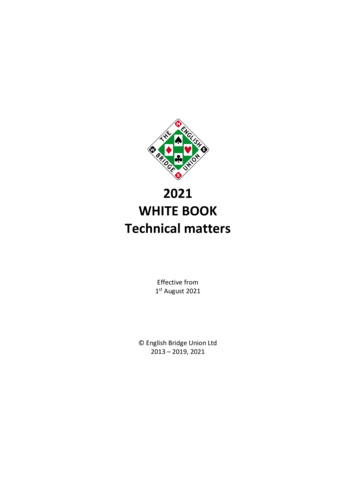
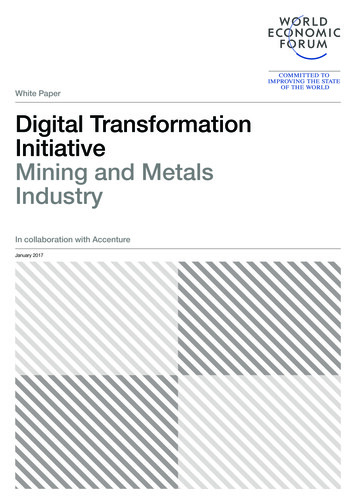
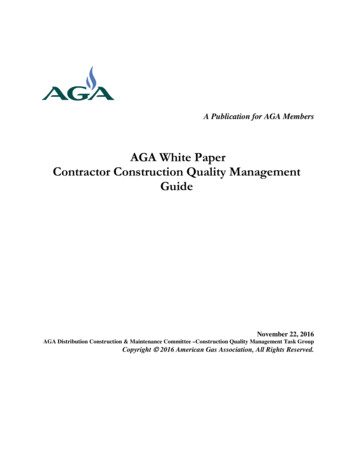
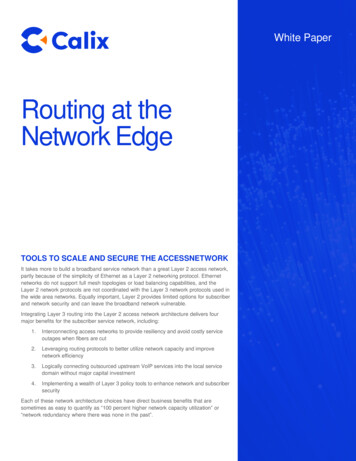

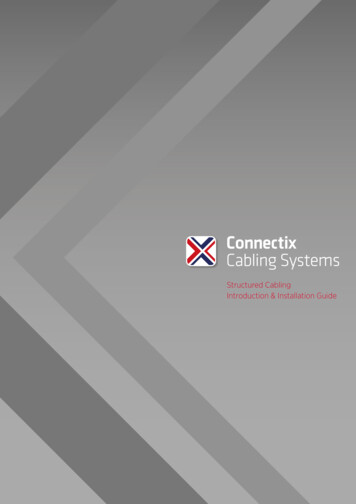
![[CLASS XII CHEMISTRY PRACTICALS]](/img/23/xii-chemistry-practical.jpg)



